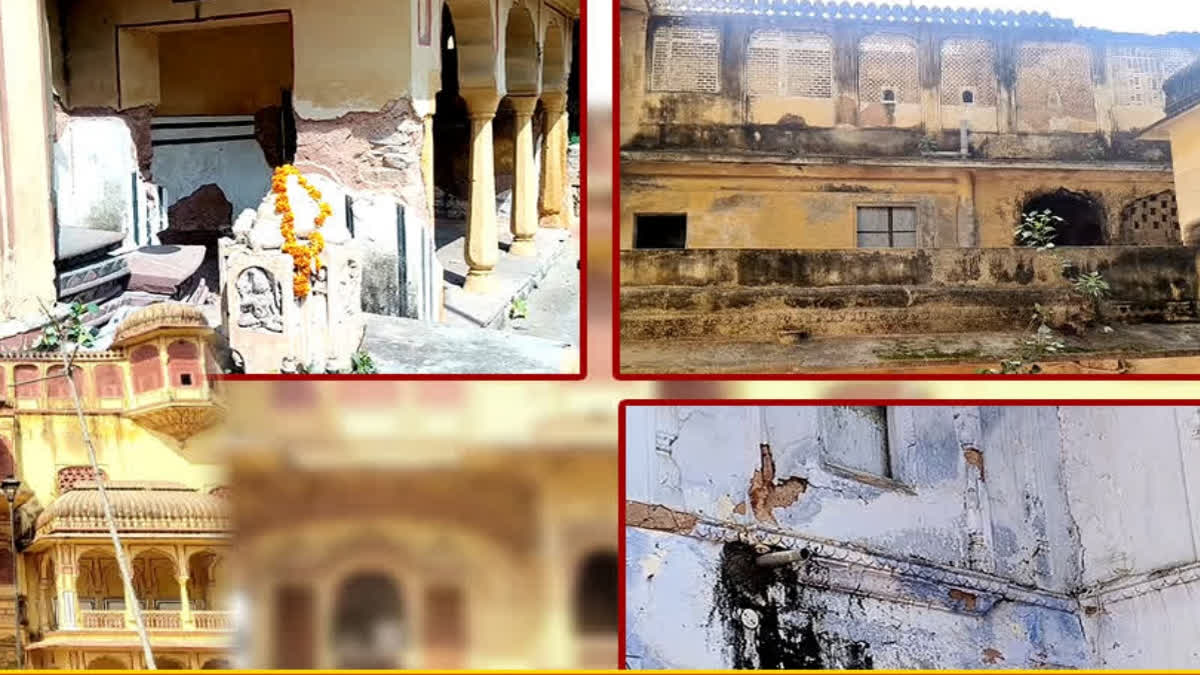Jaipur:While the walls of one temple are chapped and discolored interiors are an eyesore, the pillars of another are giving in to cracks, and some don’t even have proper flooring. These crumbling edifices stand as mute testaments to the neglect they have suffered year after year. Even as the Rajasthan government allocates ₹100 crore to build a grand corridor at Khatushyamji temple on the lines of Ayodhya and Kashi, the 593 temples under the Devasthan Department remain forgotten relics, awaiting attention and resources for their survival.
Among these is the 250-year-old Anand Krishna Bihari temple in Jaipur’s Chandni Chowk. Here, Lord Krishna and Radha Rani reside amidst fading glory. Cracks scar its once-majestic walls, and a meager allocation of ₹1 lakh for painting managed to cover only a part of the temple. Nearby, the Braj Nidhi temple shows signs of similar decay, with plaster peeling off its doors and lime crumbling at its entrances.
At the Radhavallabh Ji temple, the grandeur of the lotus-shaped pillars has been reduced to faint traces of its former self, while broken windows and deteriorating umbrellas add to the state of neglect. These historic structures, many of which are over 200 years old, are emblematic of Rajasthan’s rich architectural heritage, yet they remain at the mercy of limited funding and bureaucratic apathy.
A Drop in the Ocean
Matru Prasad Sharma, convenor of the Devasthan Department Employees Union, voiced his concerns over the inadequate funding. “The government sanctioned Rs 1 lakh per temple for whitewashing and basic repairs, but these ancient temples require comprehensive restoration. The condition of the temples is alarming—cracks, broken strips, and peeling plaster are everywhere. A good budget is essential to maintain their grandeur,” he said.
The state government recently allocated ₹13 crore for 593 temples, an amount widely criticized as insufficient. This stands in stark contrast to the ₹100-crore budget for the Khatushyamji corridor, raising questions about the prioritization of heritage conservation in the state.
Government Promises
